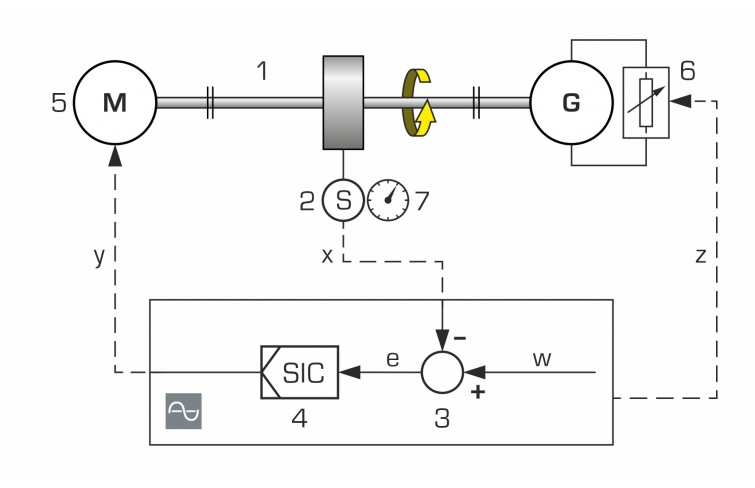The RT 050 device offers basic experiments on a speed controlled system. A shaft with a flywheel is used as the controlled system. The speed represents the controlled variable, which is determined by a measuring element, in this case an inductive speed sensor. The output signal from the sensor is fed to the software controller. The output signal from the controller influences the actuator, in this case a motor, which causes the shaft to rotate. Switchable resistors are connected as a load to a generator, which is also located on the shaft. The software is used to generate different loads in order to study the effect of disturbance variables. In this way, the speed of the shaft can be influenced. The control response is displayed in the form of a time dependency. There is a speed indicator located on the flywheel, allowing the speed to be read directly at any time. A transparent protective cover allows the experiments to be observed safely.
The powerful GUNT software for the entire device series – in the form of Hardware/Software Integration (HSI) – is a major component for the entire series. The experimental unit and the PC are connected via a USB interface (external PC required).
The impact that modifications to the system behaviour have can be studied quickly and easily with the help of the software. An integrated programmer allows you to set reference values and time intervals to carry out reference value progressions. Further aspects of control engineering are studied using software simulations for controlled systems up to the 2nd order.
The combination of the clear, real-world controlled system and simulations of other controlled systems in the RT 010 – RT 060 device series aids understanding. Preparations for the experiments, as well as software simulations can be carried out in Remote Learning environments. The experiments can be observed at any number of workstations on the local network.






















